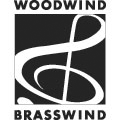
Musical Theory and Technique
The goal of this section of this website is to provide a free downloadable text that can be used in college and high school music classes.
The first version will be appropriate for a college or university introduction to music class intended to meet the fine arts requirements for non-music majors.
The second version will expand to cover material approproate for undergraduate courses in music theory and composition for music majors.
free music theory text book project
If you like the idea of this project,
then please donate some money.
send donations to:
Milo
PO Box 1361
Tustin, California 92781 |
explanation and rights
According to the Los Angeles Times college text books average $120 each (late 2006) and the major book publishers are still jacking up the prices. According to the LA Times, many poor students are barred from higher education (even though they have financial aid or a scholarship) because they simply can’t afford the price of text books, which can be more than a thousand dollars a semester/quarter.
The major book publishers put out new (more expensive) editions of text books every three years. It just happens to be that three years is the amount of time for a text book to saturate the used text book market and cut into sales of new books. The book publishers claim that this is mere coincidence with the timing of their new editions and that they only publish new editions when they need to make improvements on the existing text. it is mere coincidence that these necessary improvements happen to exactly match the sales cycle for every text book they publish!
It will take me time to get a music theory text book written, but I am a skilled writer, as proven by my highly popular website OSdata.com, a website on computer operating systems that is used by more than 300 universities and colleges around the world and that has been cited by the U.S. navy in the paperwork justifying switching to Linux for all mission critical computers and by the government of the Federal Republic of Germany in paperwork justifying their switch to Linux.
I do actively encourage students, teachers, and professional musicians to provide useful feedback and criticism to help make this project useful as a free downloadable college text book.
Donations of money to help support the writing and hosting of this project are greatly appreciated. For a donation of just $100 you can commission a particular topic. See the list of donors after the table of contents.
As chapters are created, each chapter will be available as a downloadable PDF file. In addition, the material is available as standard HTML web pages.
copyrights
This free downloadable music theory text book is Copyright © Milo except where specifically noted otherwise.
Students have permission to download this free music theory textbook (in whole or in part) and print out copies for personal use.
Government schools and the instructors/professors/teachers at government schools have permission to download and print copies of this free music theory textbook (in whole or in part) for personal use and for distribution to students in their classes. Schools/instructors/professors/teachers may charge a reasonable fee to cover the cost of printing, binding, and other related costs.
Others wishing to print this free text book should contact the author with their request.
Those who can afford to pay for this music theory text book, should send cash donations to Milo, PO Box 1361, Tustin, California, USA, 92781.
list of donors
Alex Giles kindly paid for the creation of the web page on proper breathing for vocals.







.gif)







